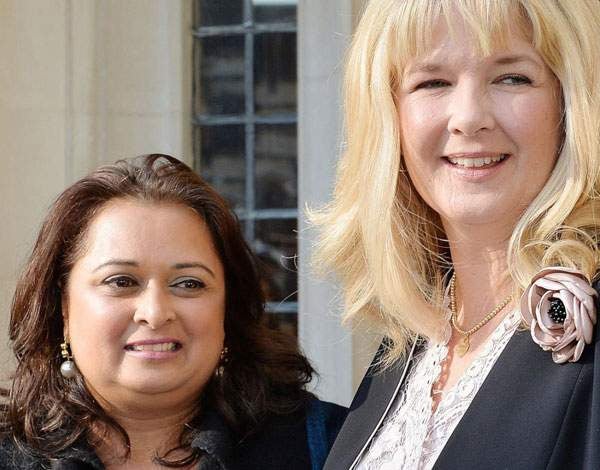
Divorce courts are now looking to pierce the corporate veil when it comes to disclosing a spouse’s assets says Richard Morgan

Above: Varsha Gohil and Alison Sharland whose divorce cases broke new ground last year
If Christmas has been so painful a shareholder-director is now contemplating divorce at some point this year, they need to think carefully about how they present their financial position in their tax return, to be filed by 31st January. And it’s not just their financial position that could be affected, but their fellow shareholder-directors too.
Indeed, 4th January is normally the day when lawyers receive most enquiries from hope-to-be divorcing spouses. This could be because festering tensions have become obvious over the festive season and have finally surfaced in the New Year.
Each spouse will have to produce financial disclosure, including, but certainly not limited to, the last two Tax Returns, on a personal basis, as well as the last two submitted Company Accounts. The obligation is for this disclosure to be full, frank and clear.
The tax return is one of the key documents a court will consider to gauge a shareholder-director’s true income, as it details drawings and the business dividends as well as PAYE income. But another key document will be the company accounts and the court will look for any discrepancies, or to see if profit has been retained in the business to make a divorcing shareholder-director’s income look lower (meaning less is paid to an ex-spouse).
If profit has been retained, a court will ask why. Is there good reason, e.g. money held back to pay a pending claim? Or plans to invest in marketing? The overall and full accounts will be gone through with a fine tooth comb, which means any unusual arrangements other shareholder-directors mirror will be flushed out into the open. And if the matrimonial courts find anything untoward this could have a dramatic impact upon the court’s stance. The court also has a duty to report to HMRC if it finds anything untoward from a tax position.
The central issues are not merely income but also the assets held within the company and, typically, the value of the business, whether on an income provider or capital basis.
In recent years there have been major investigations by divorce courts on the sacrosanct protections around corporate assets that the ‘corporate veil’ provides, causing much consternation within the commercial world.
The focus has been upon how far courts can go in reaching corporate assets assigned as marital property, a process termed ‘piercing the corporate veil’. The corporate veil dictates a company is a separate and independent legal person, distinct in law from its members.
The Supreme Court ruling of Prest v Petrodel, handed down in 2013, sent out a clear message – the court will look into a company’s structure in detail. Here, Michael Prest had a beneficial interest in properties held by companies, though the creation of a company structure was not done to defeat the spouse’s financial claims. Although the veil was not pierced, the case explored the relevant circumstances for when that might occur.
Was there impropriety? Or is the company a façade? Or was there fraud?
The court will look into how and when the asset was purchased, how the company structure was implemented and whether the nature of the company’s purpose matches the holding of the assets. The latter was an issue in Petrodel, since it was petrol and property respectively.
What was not an issue was that fraud would pierce the veil. Other aspects of concealment and evasion may in other cases have an impact.
In 2015 there were two Supreme Court cases which dealt with non-disclosure within matrimonial proceedings – Sharland v Sharland and Gohil v Gohil. The cases looked at re-opening divorce settlements on the grounds of non-disclosure. Each showed the courts will look into shareholder-directors’ financial positions and the companies in an exhaustive manner. The clear message was that non-disclosure ‘unravels all’.
Companies should therefore consider their whole structure, having in place clear planning and records to establish and protect the independence of the company from its shareholders and officers. Shareholder-directors ought to be liaising with their accountants, and their lawyer, so their financial position is not just clear to the HMRC but also transparent when they come under the looking glass of court disclosure.
Richard Morgan is a Solicitor in the Family Team at SA Law






